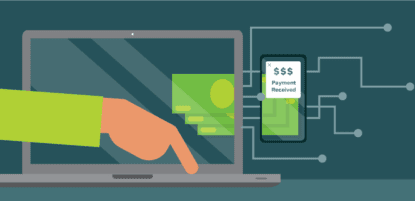Imagine you receive an urgent email from a trusted vendor requesting updated payment details. It might seem like a routine request—and part of maintaining a smooth partnership built on trust.
Unfortunately, fraudsters often exploit this very sense of routine. Card fraud schemes like vendor impersonation and account takeover prey on the assumption that an innocuous request is business as usual. However, the financial and operational stakes of fraud are high. That’s why understanding how to prevent card fraud is essential for safeguarding your organization’s finances and preserving the integrity of your operations.
Key takeaways
- While businesses benefit from the speed and security of card payments, their widespread use also opens the door to card fraud—a growing threat for modern organizations.
- Common types of card fraud, like account takeover, card-not-present fraud, and vendor or invoice fraud, exploit specific weaknesses in payment systems and processes.
- Adopting best practices like real-time transaction monitoring, accounts payable (AP) automation, the use of virtual cards, and employee training can significantly reduce the risk of card fraud.
What is card fraud?
Card fraud refers to the unauthorized use of a payment card, such as a credit or debit card, to access funds, goods, or services. Fraudsters execute card fraud schemes by exploiting weaknesses in an organization’s payment system, as well as weaknesses in processes and human oversight. Using tactics like phishing, fraudsters deceive individuals into approving fraudulent transactions or sharing credentials. While card fraud is typically an external threat, it can also occur internally.
Why is card fraud a growing concern for businesses?
Card fraud remains a persistent and costly risk. According to MineralTree’s 9th Annual State of AP Report, 24% of respondents believe that card fraud remains a common threat. The Association for Finance Professionals also revealed that instances of fraud jumped from 65% to 80% between 2022 and 2023—and alarmingly, 3 out of 10 businesses that experienced payment fraud couldn’t recover lost funds.
The rising adoption of card payments continues to fuel this trend. While many vendors favor card payments for their speed and ease of use, they are particularly vulnerable to fraud due to the potential for stolen credentials, weak verification processes, and the inherent anonymity of online transactions.
What are the common types of card fraud facing businesses?
Businesses face various card fraud schemes that exploit both technological and human vulnerabilities, with each posing unique challenges.
- Account takeover fraud
- Card-not-present fraud
- Internal employee misuse fraud
- Vendor and invoice fraud
- Overcharge and refund fraud
Let’s take a closer look at each card scheme in more detail.
Account takeover fraud
Account takeover fraud (ATO) occurs when fraudsters gain unauthorized access to a legitimate user’s account. They often achieve this by stealing login credentials through social engineering attacks such as phishing or exploiting weak passwords. Once inside the account, fraudsters can manipulate settings, initiate unauthorized transactions, or redirect funds to fraudulent accounts.
Card-not-present fraud
This type of fraud occurs during online or remote transactions in which the cardholder and physical card are not present. The lack of in-person verification makes it easier for fraudsters to use stolen card details to carry out transactions.
Internal employee misuse fraud
Disgruntled or dishonest employees may misuse company cards or credentials to make unauthorized purchases. In some cases, misuse can be unintentional, stemming from employees misunderstanding expense policies or accidentally exceeding spending limits due to a lack of clear guidelines. Without well-defined expense policies and controls, like spending limits and transaction monitoring, it’s easy for this type of fraud to go unnoticed.
Invoice and vendor fraud
Invoice and vendor fraud occurs when fraudsters pose as legitimate vendors to submit fake invoices or alter payment details, redirecting funds to fraudulent accounts. In these schemes, bad actors take advantage of gaps in an organization’s verification processes, counting on the business to approve the payment without thorough scrutiny to verify the vendor’s information.
Overcharge and refund fraud
In these schemes, fraudsters create fake customer profiles or tamper with payment system settings to conceal fraudulent activity, such as obscuring transactions. Scammers often overcharge a customer’s card and then issue a refund to a different account, pocketing the difference. In other instances, they may exploit lenient refund policies or use stolen card details to request multiple refunds.
8 best practices for preventing card fraud in your business
Proactive security measures and solutions like accounts payable (AP) automation can significantly reduce your risk of card fraud. Consider the following best practices to strengthen your defenses against this critical threat:
- Monitor transactions in real-time
- Cross-reference invoice information with what is on file
- Invest in AP automation
- Leverage fraud detection tools
- Prioritize virtual cards
- Offer employee training
- Use multi-factor authentication for better internal controls
- Enforce segregation of duties for all outgoing payments
Let’s take a more detailed look at each best practice below.
Monitor transactions in real-time
Real-time transaction monitoring enables you to identify, flag, and respond to suspicious activity instantly— before it escalates. Advanced analytics tools use historical data and machine learning algorithms to detect unusual patterns, such as sudden spikes in spending or transactions originating from an unfamiliar location.
Cross-reference invoice information with what is on file
Verify every invoice against your internal records. By paying close attention to details like vendor addresses, bank account details, and payment terms, you can detect discrepancies before any funds are released. Consider leveraging automated invoice matching tools to simplify the process and reduce human error.
Invest in AP automation
AP automation streamlines payment processes while enhancing security. Automated workflows reduce human error—a common entry point for fraud—by accurately matching invoices to records before payment approval. Many AP automation solutions also generate comprehensive audit trails, which makes it easier to trace and investigate suspicious activities.
Leverage fraud detection tools
Invest in fraud detection tools that use AI and machine learning to analyze transactions and identify anomalies. These tools help your team spot potential invoice fraud in real time.
Prioritize virtual cards
Virtual cards function similarly to traditional credit cards, but they leverage tokenization to provide an extra layer of security. Tokenization involves generating a unique number for each virtual card transaction to reduce the risk of misuse. Virtual cards also allow you to set transaction limits and expiration dates for even greater control over spending and reduced fraud exposure.
Offer employee training
Employees are your first line of defense against many different types of fraud schemes, which makes awareness of fraud prevention measures critical. Conduct regular workshops or provide online modules employees can complete on their own time, covering topics like how to recognize phishing emails, secure payment data handling, and indicators of different fraud schemes. You can also gauge their retention and understanding of these learnings through exercises such as simulated phishing attacks, which are controlled tests designed to mimic real phishing attempts.
Use multi-factor authentication for better internal controls
Multi-factor authentication (MFA) requires users to provide more than one credential to log in to an account or system. Credentials can include a password, a code sent to a user’s mobile device, a prompt to answer a secret question that the user set, or biometrics, like a fingerprint. Internal controls like this make it difficult for unauthorized users to access sensitive systems and data, enhancing your organization’s overall security posture.
Enforce segregation of duties for all outgoing payments
Segregation of duties is a best practice that ensures no single person has too much control over the payment process. Businesses can reduce the risk of fraud, theft, and errors by assigning different staff members to initiate and authorize payments. For example, one person may prepare a check while another signs it, adding an extra layer of oversight. This approach enhances security and helps catch potential mistakes before payments are finalized.
Better prevent card fraud in your business with MineralTree
Preventing card fraud requires a multi-faceted approach that combines technology, employee education, and proactive monitoring. By automating your end-to-end AP process with MineralTree, you can slash your risk of fraud while significantly improving your operational efficiency.
Schedule a demo to learn how you can safeguard card payments against fraud.
Card fraud prevention FAQs
These frequently asked questions provide an overview of the key information you need to know about protecting your business against card fraud.
1. How can a business protect itself from credit card fraud?
A business can protect itself from credit card fraud by monitoring transactions in real time to detect suspicious activity before it escalates. Security mechanisms like MFA add an additional layer of defense by making it difficult for unauthorized users to access sensitive systems in the first place.
AP automation systems further enhance security by reducing manual errors, improving audit traceability, and minimizing processing delays. It’s also important to train employees on fraud prevention best practices, which empowers them to recognize and address potential threats.
2. How do businesses implement fraud prevention techniques?
Organizations can implement fraud prevention techniques through a combination of technology and process improvements. For example, organizations can use virtual cards, conduct regular audits of payment systems, and leverage AP automation software with integrated security features such as MFA and payment limits.
3. What is the difference between phishing and BEC?
Phishing and business email compromise (BEC) represent two distinct types of fraudulent activity. Phishing refers to bad actors sending fraudulent emails or messages that are designed to steal personal data like login credentials or financial information. On the other hand, BEC involves impersonating individuals like executives or vendors, manipulating the victim into transferring funds.




